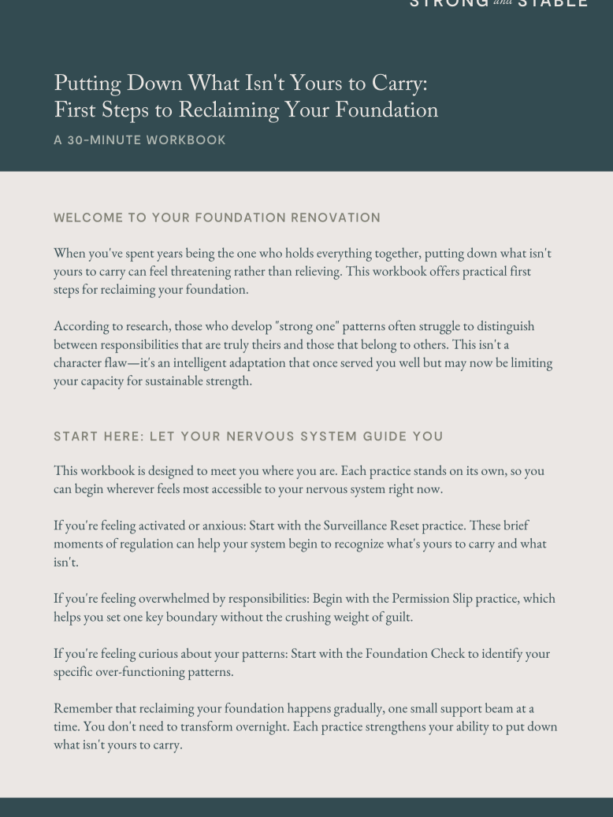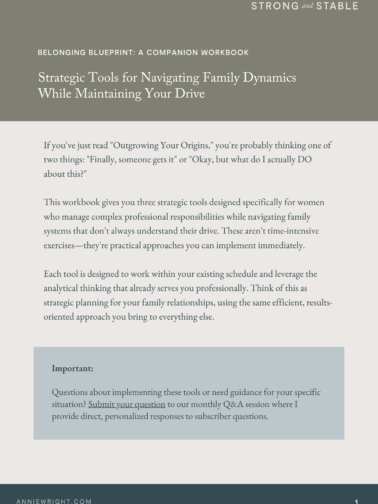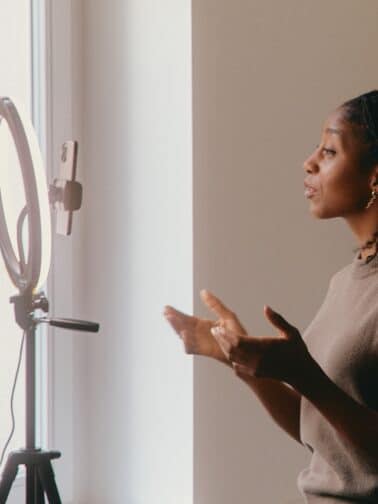Many of you shared how you recognized yourselves in Alexandra’s story. The constantly running mental catalog of tasks. The physical exhaustion that sleep doesn’t touch. The quiet resentment that bubbles up unexpectedly when you’ve been carrying everything for too long.
You’re not alone in this pattern. Your nervous system developed this brilliant adaptation for good reason, and the path toward putting down what isn’t yours doesn’t happen overnight.
For women who’ve built their identity around being the capable one, the strong one, the one who manages it all — the journey toward a more sustainable foundation happens slowly, with gentle steps that honor what your system can integrate right now.
What makes sustainable change possible isn’t willpower or “trying harder” — it’s creating small, consistent shifts in how your nervous system recognizes what’s yours to carry and what isn’t.
The workbook I’m sharing with paid subscribers today offers precisely that — nervous system-informed practices designed to help you begin this foundation work at a pace that feels workable for your particular system.
You don’t need to transform overnight. Each practice strengthens your ability to put down what isn’t yours to carry.
The Foundation Check: Identifying Your Patterns
Just as an architect must assess a foundation before beginning renovations, we’ll start by understanding where your foundation is carrying too much weight. This brief assessment will help you identify your specific over-functioning patterns and recognize early warning signs.
Over-Functioning Patterns Inventory
For each statement below, note how often you experience this pattern:
1 = Rarely | 2 = Sometimes | 3 = Often | 4 = Almost Always
- I anticipate others’ needs before they express them.
- I feel responsible for others’ emotions or problems.
- I say yes to requests even when I’m already overwhelmed.





